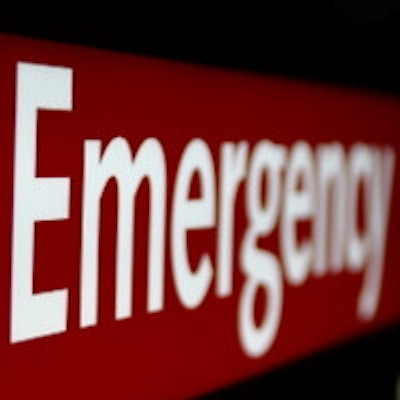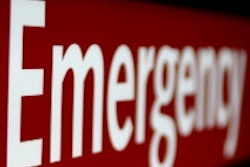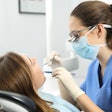
Adults enrolled in Medicaid may be living with unresolved dental problems, according to a new study. Almost half of the adults in the study who visited an emergency department (ED) for dental care did not visit a dentist in the subsequent six months, the researchers found.
The study authors looked at 2010-2012 Iowa Medicaid claims data to see how many adults visited the ED for a dental problem, and then how many of those adults saw a dentist in the months before and after the visit.
"Whether the millions of people visiting EDs for dental problems receive the dental care required to resolve their problems is a major unanswered question," wrote the study authors, led by Astha Singhal, BDS, MPH, PhD, an assistant professor of health policy and health services research at the Boston University School of Dental Medicine (Journal of the American Dental Association, November 2, 2015).
"Understanding the pattern of follow-up dental care and factors associated with it would enable the identification of groups at high risk of not receiving dental care and either having repeat ED visits or living with unresolved dental problems," they noted.
Dentist visits before and after an emergency
Dental care is one of the highest unmet medical needs for U.S. residents, and most dental-related ED visits are by adults who are either uninsured or enrolled in Medicaid, according to the authors. Emergency department visits for dental needs are also increasing; however, most emergency departments only provide palliative care, such as prescription drugs, rather than fixing the source of the problem.
"We hypothesized that adults enrolled in Medicaid who had a dentist visit in the 12 months before the ED visit would have a higher rate of subsequent dental visits, with the rationale that past dental care access would be a predictor of future dental care access," wrote Dr. Singhal and colleagues, who were from the University of Iowa.
To test their hypothesis, the researchers used Medicaid claims and enrollment data for adults in Iowa age 21 years and older. They included adults who had at least one dental-related ED visit in 2011 but excluded adults who were enrolled in a type of Medicaid that did not cover dental care. They also excluded adults who saw a dentist in the two weeks prior to the ED visit, because the emergency department visit could have resulted from a dental procedure complication.
Of the 2,430 adults who met their criteria, the researchers found that about half of the adults visited the dentist within six months of their ED visit. However, 36% did not have a dental visit within six months of their ED visit, and another 12% lost Medicaid eligibility.
 Data courtesy of "Dental care after an emergency department visit for dental problems among adults enrolled in Medicaid" (JADA, November 2, 2015).
Data courtesy of "Dental care after an emergency department visit for dental problems among adults enrolled in Medicaid" (JADA, November 2, 2015)."Our findings suggest that almost one-half of all adults enrolled in Medicaid with a dental ED visit do not have a dentist visit within the next 6 months," the authors wrote. "This is a serious problem, because those who did not have a subsequent dentists visit are likely to be living with an unresolved dental problem, which can have a significant effect on their quality of life."
In addition, the authors found that adults who saw a dentist prior to visiting the emergency department were also more likely to see a dentist after the ED visit. On average, about 35% of adults included in the study visited the dentist prior to visiting the ED. However, 44% those who visited a dentist after their ED visit had seen a dentist before as well, compared with 24% who did not see a dentist before their emergency department visit.
"This study's results allow us to confirm our hypothesis that those with a prior dentist visit had a higher rate of subsequent dentist visits after the index ED visit," the authors wrote. "In addition, other factors such as race and having subsequent ED visits for dental problems were associated with time to a subsequent dentist visit."
Predicting who will need care
An obvious shortcoming of the study was that it only looked at Iowa, so the findings cannot necessarily be applied to all adults on Medicaid. Each state has different demographics, and dental benefits for adults enrolled in Medicaid also vary by state, the authors noted.
Furthermore, the study was based on the assumption that the dentist visit after the ED visit was for the same problem, which may not be the case. The study also did not look at alternative ways that adults may have received dental care, such as at a free dental clinic or a physician's office.
The authors recommend future researchers use a survey to get more information about why adults visited the emergency department for dental care and also what their prior and subsequent dental visits addressed. In addition, future studies may be able to look at what policies may delay dentist visits, such as low Medicaid reimbursement rates and a lack of dentists who take Medicaid.
The researchers also believe that their findings, notably that not regularly visiting the dentist and repeatedly visiting the ED for dental care, may be used for screening tools to help identify those at-risk for not receiving proper dental treatment.
"In this study, we found that adults enrolled in Medicaid who visited a dentist in the prior year had a higher rate of subsequent dentist visits within six months after they visited an ED for dental problems," the authors concluded. "In addition, adults who repeatedly visited the ED for dental problems and nonwhites had lower rates of subsequent dentist visits. Hence, they remained at risk of living with an unresolved dental problem, and, possibly, returning to the ED seeking temporary relief."



















